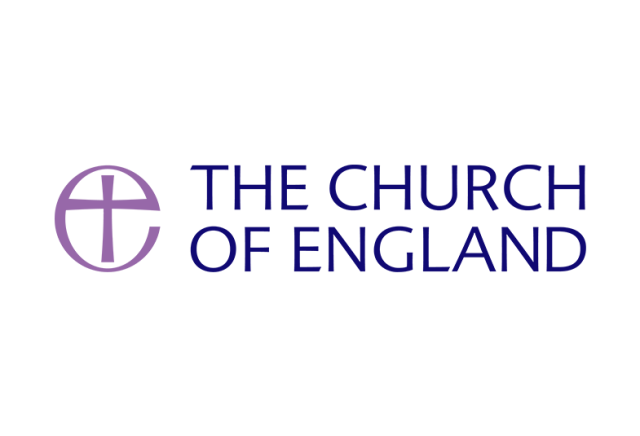
Marika Rose: Remember Amalek
April 12, 2024
Focus on Modern Believing
May 31, 2024While ‘perishing’ might be an apt description of the current state of the institutional Church, it’s not one that inspires much hope for the future. When I first read Simon Cross’s blog post ‘Looking for what is becoming’, my instinct was to leap into the fray and posit all sorts of ways of looking that would ultimately, when I thought about it later, return me to the place I started from, the place of ‘perishing’ as he puts it.
Nobody likes to think of themselves as perishing. It’s a bit too much like thinking about your own mortality when you have just been diagnosed with a terminal illness, as opposed to thinking about death as a philosophical abstraction. It also resonates with the idea of perished rubber, with images of deflated balloons and flat tyres, things that once resonated with memories of fun and life, like birthday parties and mountain bike rides, but are now, like the balloon and the tyre, a relic of the past. The Church falls into this category for much of the time, so it is hardly surprising that efforts to revive its previous life fall flat (pun intended) and lead to burnout. Perhaps Simon is right. We should just accept the status quo.
Or should we? The problem with stopping at this point, which is a perfectly understandable place to stop when it comes to thinking about the institutional Church, is that it deprives us of life, as well as hope. Here, I would equate life with the air in the balloon or tyre that has gone flat. Air is oxygen and oxygen is life. I believe that there are signs of this life in the Church, if we start looking for it in the right places.
On the whole, these places are not part of a vast panorama of the Church of the Future but separate parts of a constellation which is the Church of the present, of which one part, the institutional Church wherever we happen to be in it, is a dying star. But this does not mean that the constellation itself is dying, or that there is not room for a new star to take the place of the old one. We, and anyone who believes in the Church, are that timidly burning star. We are potential life bearers.
So what is needed is the courage to lay hold of the life given to us in the Spirit of the risen Christ and be as the early apostles were in the upper room, ready to receive that breath, that life-giving oxygen. We do this irrespective of what may or may not be going on in the visible or institutional Church; its managerial politics, its power games, its subtle hypocrisies of exclusion, contextually adapted (to a particular tradition, historic prejudice, or regional history) and still operating just beneath the surface of the Church’s life, but, as we wait on that greater life, still believing in the goodness at the heart of the Church, a goodness that is manifested in the people who support it, pray for it and sometimes turn up on Sundays and, it has to be said, in some of the people who lead it.
But there remains the question of how this vision is to be worked out practically, so as to produce an entity (or a new star) that is visible to the wider world and that continues to impart life to its members. How is the new star that may already be born to be nurtured and grow?
I think part of the answer to this question lies on our own doorstep here at Modern Church. We are people who believe in the ‘becoming’ or, to put it more theologically in the ‘already and the not yet’, in what is technically known as realised eschatology. This is rarely spoken of, except perhaps in the context of a learned paper or article, but it is lived out in our gatherings online, in our conferences and meetings and in our individual friendships many of which have lasted for decades. It is hard to pinpoint what it is that Modern Church does that makes it feel like the sign of a ‘becoming’, of something that is already happening but which we have not yet fully woken up to. Modern Church is, after all, no more than a theological society where you would expect to hear learned debate and experience a confluence of the like-minded, something that is unlikely to issue forth into vibrant hope in the future of the wider Church.
But this is not what happens at Modern Church. We do have our differences of opinion and have known quite strong disagreements from time to time over the years. We are not governed by the need for niceness. We trust each other enough for this not to be necessary. Neither are we particularly daunted by the idea of ‘perishing’; many of us are old enough to be realistic about our own longevity. But we do burn with a sense of urgency when it comes to the future of Modern Church and to its ongoing prophetic witness. We long for a new generation of theologians and church members of all ages and denominations who will warm to our vision and want to take Modern Church, and the wider institutional Church, forward into a vibrant ‘becoming’, into a future that has perhaps already begun.
Lorraine Cavanagh




1 Comment
From Anthony Woollard
Our Annual Parochial Church Meeting yesterday did not look like a “perishing” institution! It was packed out, with a surprising number of new and younger people. And this is not some charismatic/evangelical “new community” or “fresh expression”, but a mainstream (admittedly high-profile and with a critical mass of cngregation) open-catholic parish church, where the worship is pretty traditional though not narrowly so, and the teaching is gently liberal with much opportunity for searching and questioning – and where (most of the time) people love each other and it shows. There is still indeed plenty of oxygen around, and, even if the necessary balloon may need a bit of repair, I am far from convinced that that has entirely had its day either.